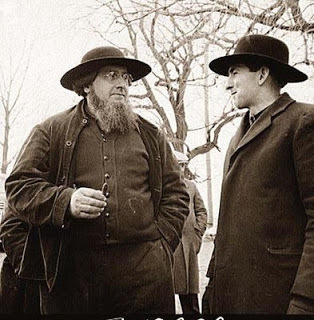Dwight Longenecker's Blog, page 324
November 15, 2011
Nag, Nag, Nag
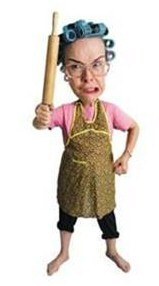
I TOLD you to make that donation to Standing on My Head and I meant it!! You get up. You eat. You go out. You come home. You sit on the sofa. You play video games. You stare at me. You don't say anything or do anything. Now I'm telling you to take some initiative. How many times do I have to tell you? How is Father Longenecker going to pay for orthodontics for those kids of his--not to mention college if you don't do your part and pitch in? Don't tell me I'm blackmailing you. Blackmail? I'll show you a black eye not black mail! I'm running around all day long doing everything around here and you can't even make that donation to the blog? All you have to do is move your hand a few inches and click on the Donate button and then wiggle your finger a little bit to click on the how much you want to donate. How hard is that? So get on with it, and if I have to ask you again you're going to be sorry. And another thing...
Published on November 15, 2011 06:03
Tolkien on the Eucharist
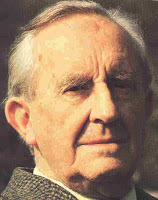
"Out of the darkness of my life, so much frustrated, I put before you the one great thing to love on earth: the Blessed Sacrament... There you will find romance, glory, honour, fidelity, and the true way of all your loves on earth, and more than that: Death: by the divine paradox, that which ends life, and demands the surrender of all, and yet by the taste (or foretaste) of which alone can what you seek in your earthly relationships (love, faithfulness, joy) be maintained, or take on that complexion of reality, of eternal endurance, which every man's heart desires."
Published on November 15, 2011 05:57
Hidden Holiness
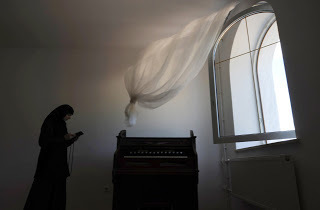
The problem with finding a good spiritual director is that you are looking for a holy person, and the problem with trying to find a holy person is that they are hidden. The treasure is buried in an ordinary field. The pearl of great price is in an ordinary oyster among a million other oysters at the bottom of the bay.
So we go for the celebrities and mistake fame for holiness, or we are inspired by a great preacher or teacher and mistake a speaking gift for holiness, or we see someone engaged in helping the poor or being kind and mistake kindness for holiness, or we meet a person who has a naturally engaging personality and who has learned good manners and we mistake good manners for holiness. Perhaps we meet a professional religious person--a priest, monk or nun and we see their religious clothes and like their caring, religious manner and think that is holiness.
It may be, but then again it may not be. That holiness is hidden goes with the definition because a holy person is humble, and a humble person is not only self effacing, but their humility is really expressed in the fact that they are being themselves, and a person who is truly himself or herself does not attract much attention. They fit. They blend in. They belong. This humble, holy person does not attract much attention because they are taken for granted--like a blue sky or like the grass growing.
Furthermore, if you seek out the humble person and hope they are holy, and ask them for direction or guidance they will probably chuckle and tell you to move on because they really don't think they have much to offer you. They will listen to you kindly, but chances are, they will dismiss your request, and you will have to keep searching.
It's more complicated. If you are looking for the holy person amongst the professional religious, and among those lay people who are so pious that they make the professional religious look like amateurs, then you are also likely to be disappointed. The holy person may be hidden there, as he or she may be hidden anywhere, but just because the person does lots of religious stuff doesn't mean they are holy. Indeed, if the holy person has taken the Lord's advice and prays in secret, and washes their face and appears joyful when fasting, then the outwardly 'religious' signs may be indicators otherwise.
Instead, I look for secret signs. I look for the person who is contented and joyful. I spy out the person who listens more than they talk. I look for the person who has learned--really learned--to recognize and love the face of Christ in five ways: in the Church, in the person of the priest, in the Eucharist, in the Sacred Scriptures and in the face of the poor. I look for the person who responds to the promptings of the Holy Spirit in simple obedience and without fanfare. I look for the person who accepts suffering and knows how to turn it into something golden.
If you find a person like that, then you've found the secret treasure--the hidden garden--the pearl of great price.
Published on November 15, 2011 05:23
November 14, 2011
Standing on My Head
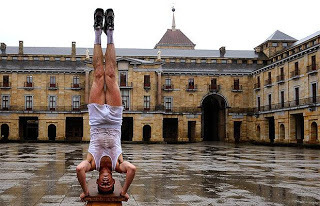
...from the new edition of Adventures in Orthodoxy coming out in 2012. There are still copies of the first edition available through my website...click here.
There are some brave revolutionary souls who stand on their head every day. They are not acrobats but artists, poets, mystics, comedians and prophets. Like children, they have a fresh way of seeing and think it the most ordinary thing in the world to have a new idea, insight or enthusiasm. Furthermore, they think it most natural to share these insights and enthusiasms with others. It is their duty, their joy and their instinct to share their revolutionary insights, and they are always surprised when they are persecuted for their effort.
If these acrobatic souls are like children, then there is one famous child who speaks for them all. He is the bright-eyed boy who appears in the story of the emperor's new clothes. Everyone in the court gasped with delight at the emperor's imaginary haute couture. Everyone in the crowd pretended to admire the emperor's invisible satin suit. Only the boy in the front row had the temerity to cry, 'But he isn't wearing anything at all!' That child stands for every prophet, poet, artist, comedian and mystic in the world. He sees clearly what everybody else has been blind to, and declares with unembarrassed delight his joy at the emperor's nudity.
It is the boy's job to stand the world on its head, and in a world that is already convoluted, this means putting things the right way around. In other tales the same task falls to the court jester. In Shakespeare's plays the jester is the one who speaks the hard truth to a character who has gone soft in the head. Sometimes the jester shocks and offends with blunt but clear statements. More often he pops the balloon of pomposity with riddles, jokes, puns and poems.
Like the boy who laughed at the naked fat emperor, the jester's job is to stand on his head and then make people see themselves and the world in a fresh way. For his labors the jester is always laughed at, but never thanked. In fact, he is more often persecuted for his efforts. His clients may laugh at the clown's red nose, but they will also tell him not to poke it into their affairs. If he pushes his prophecies and jokes too far the jester may be thrown into a well, mocked, beaten or simply ignored.
This role attracts me. By nature I am one of those lugubrious optimists— liturgical on the outside, but anarchical on the inside. As the fool longs to play Hamlet, so this Hamlet has always longed to play the fool. I want to wear the jester's motley, dangle a little stick with a fool's head and a feather on the end, and wear rings on my fingers and bells on my toes. I want to scurry around in pointy slippers and poke my nose into our holy places-- both the secular ones and the sacred ones. I want to enter the holy of holies and stand on my head so I can see them from a totally new perspective. If I can manage the gymnastics, then the floor may become the ceiling and the ceiling the floor. What seemed sacrosanct may turn out to be mundane, and what was mundane may burn with meaning.
Published on November 14, 2011 10:56
Stick 'em Up Campaign
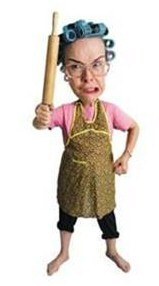
Well, have you made that donation to Fr Longenecker's blog yet? Have you? You know I told you to do that over the weekend, and now it's Monday morning and you still haven't done it? What have you been doing all the time? Just surfing the net and wasting time as usual. In the meantime I've been slaving away trying to get the house clean and you can't even manage to make that donation to Father's blog? What does it take? A little click of the mouse and you go to PayPal and make the donation! I could have done it in a second and then got on with the rest of my work, but no. You said you were going to do it and you haven't. Now are you going to do it? Honestly. I don't know what I'm going to do with you. I tell you to do something and you just don't do it. What if I were like that? What if I never did what I said I was going to do and then kept making excuses. You make me so tired and fed up. I'll tell you what I'm going to do...and another thing...
Published on November 14, 2011 08:12
Did Jesus Have Long Hair?
Here's an article on the forensic work to discover the 'real face' of Jesus. The scientist in question works to build up a face from a typical first century Palestinian Jew. He does not refer to the Shroud of Turin and says the reason the Shroud is a fake is because it shows Jesus to have long hair and St Paul says, "For a man to have long hair is a shame." (I Cor.11:14)
So that settles it? If only the forensic scientist did a bit more homework he would be familiar with the Jewish Nazarite tradition in which a Jew would make a religious vow not avoid corpses, abstain from wine and to not cut his hair. Samson in the Old Testament was a Nazarite and John the Baptist was a Nazarite from birth. A Jew would take a Nazarite vow for at least thirty days, and could renew that vow as often as he wished. At the end of the vow time period he would be immersed in water and make certain sacrifices at the temple. Remember that Jesus is referred to not just as 'from Nazareth' but also as a 'Nazarene', and scholars have long argued whether the name is just a reference to his home town or whether it is also a reference to his status as a Nazarite brother.
So did Jesus have long hair--as is shown in the shroud? His cousin John was a Nazarite, and Jesus was following very much in the prophetic tradition, so it is very likely that he did have long hair, and that this was a sign of his role as a holy man and teacher. Jesus was blamed for being a 'wine bibber'. (Mt.11:19) so does that mean that he never too the Nazarite vow, or that he was being blamed for breaking it? It could go both ways.
One of the marks of Jesus' ministry is that he fulfilled the whole Jewish law from the inside out. He fulfilled the law, but he broke some of the rules. We see him gathering corn on the Sabbath with his disciples and annoying the Pharisees. He broke some of the dietary and cleansing rules and justified himself. Most of all, he broke the individual laws by bursting them with true freedom. Does the fact that Jesus ministered to dead people also show that he was not a Nazarite? (they were forbidden from being under the same roof with a corpse) or the fact that he raised them from the dead show that he was fulfilling the Nazarite vow from the inside out?
Enough minutiae. It's my opinion that Jesus, like his cousin John the Baptist, took the Nazarite vow, and kept it strictly for the appointed time, and that he maintained the Nazarite rule of life informally in identification with his cousin John, and the tradition of the prophets, and that therefore, yes, he had long hair.
So that settles it? If only the forensic scientist did a bit more homework he would be familiar with the Jewish Nazarite tradition in which a Jew would make a religious vow not avoid corpses, abstain from wine and to not cut his hair. Samson in the Old Testament was a Nazarite and John the Baptist was a Nazarite from birth. A Jew would take a Nazarite vow for at least thirty days, and could renew that vow as often as he wished. At the end of the vow time period he would be immersed in water and make certain sacrifices at the temple. Remember that Jesus is referred to not just as 'from Nazareth' but also as a 'Nazarene', and scholars have long argued whether the name is just a reference to his home town or whether it is also a reference to his status as a Nazarite brother.
So did Jesus have long hair--as is shown in the shroud? His cousin John was a Nazarite, and Jesus was following very much in the prophetic tradition, so it is very likely that he did have long hair, and that this was a sign of his role as a holy man and teacher. Jesus was blamed for being a 'wine bibber'. (Mt.11:19) so does that mean that he never too the Nazarite vow, or that he was being blamed for breaking it? It could go both ways.
One of the marks of Jesus' ministry is that he fulfilled the whole Jewish law from the inside out. He fulfilled the law, but he broke some of the rules. We see him gathering corn on the Sabbath with his disciples and annoying the Pharisees. He broke some of the dietary and cleansing rules and justified himself. Most of all, he broke the individual laws by bursting them with true freedom. Does the fact that Jesus ministered to dead people also show that he was not a Nazarite? (they were forbidden from being under the same roof with a corpse) or the fact that he raised them from the dead show that he was fulfilling the Nazarite vow from the inside out?
Enough minutiae. It's my opinion that Jesus, like his cousin John the Baptist, took the Nazarite vow, and kept it strictly for the appointed time, and that he maintained the Nazarite rule of life informally in identification with his cousin John, and the tradition of the prophets, and that therefore, yes, he had long hair.
Published on November 14, 2011 07:35
Three Vows
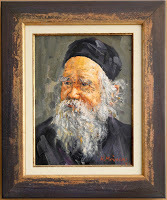
There are three Benedictine vows:
Obedience, Stability and Conversion of Life.
The three are braided together into one strong rope.
Published on November 14, 2011 07:25
Brighton Rock

I'm re-reading Graham Greene's novel Brighton Rock as research for an article for Joseph Pearce in StAR magazine. As usual, Greene explores the dark corners of the human heart in a thought provoking and disturbing manner. It's like he's poking the bottom of a clear and beautiful forest pond in order to stir up all the muck and muddy the water. On purpose.
Pinkie is a seventeen year old gangster in the 1930s British sea side town of Brighton. He's a virgin. He doesn't drink or smoke or gamble. But he's also a murderer and a Catholic. Pinkie is a portrait in pure evil, and he's being tracked down by a cheerful, bosomy worldly woman called Ida who drinks too much, fornicates happily in the seedy hotels ("It don't do anybody no harm.") gambles recklessly on the horses but she "Believes in justice" and "knows right from wrong."
Here's what's got me puzzled: is there a difference between 'right and wrong' and 'good and evil'? Pinkie's innocent girlfriend Rose is also a Catholic, and it is as if she and Pinkie exist on a different plane from all the other characters. They don't deal in questions of 'right and wrong'. They deal in questions of 'good and evil.' They deal in the currency of damnation and salvation.
Ida is a conventionally moral person. She believes in law and order and rules and regulations, but she has no regard and not a flicker of understanding for the deeper morality of the divine law expressed in the Catholic faith. She's an upright person. Maybe she would claim to be a Methodist or CofE (Church of Everybody) She's self righteous in her way, and would never dream that (from Pinkie and Rose's Catholic point of view) that she is just as much enmeshed in mortal sin as Pinkie is.
This is, perhaps, the simple genius of Graham Greene's tortured stories: he shows characters operating according to this other, stranger set of rules--the rules of the Catholic faith--rules that do not replace the social 'right and wrong' that Ida understands--but rules that go above them and take simple human morality into a new dimension.
In this way Greene reveals something about being Catholic that is very hard to define--the sense that within Catholicism one is living the ordinary life that everyone else leads--but with a different perspective on everything--a stranger dimension--a dimension that has greater responsibilities, greater consequences and greater joys.
Published on November 14, 2011 07:06
November 13, 2011
From the Combox
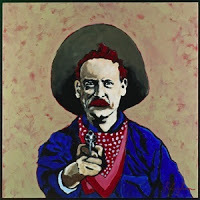
One reader says: "Everyone who owns a computer to read this blog can afford to give Father a $25 donation. Don't be cheap."
...Well I wasn't going to be quite so blunt, but hey, he said it, I didn't...
Published on November 13, 2011 14:16
The Real Me
Published on November 13, 2011 12:45
Dwight Longenecker's Blog
- Dwight Longenecker's profile
- 80 followers
Dwight Longenecker isn't a Goodreads Author
(yet),
but they
do have a blog,
so here are some recent posts imported from
their feed.


